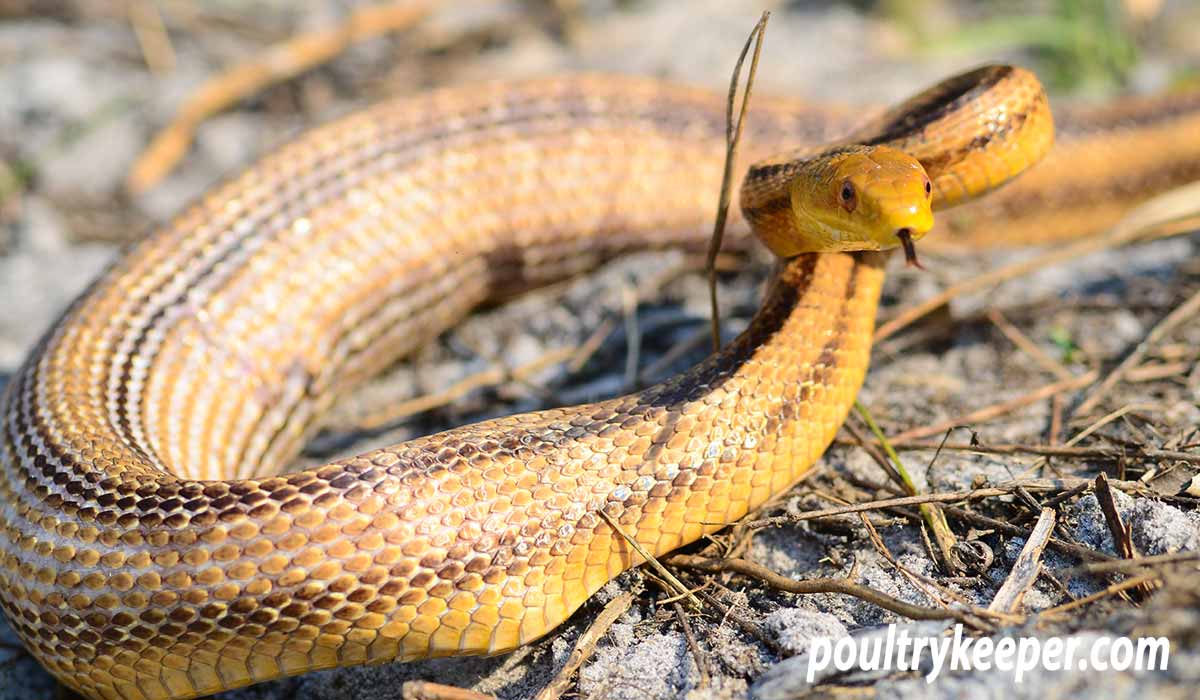
In this article, we’ll cover what species of snakes are most likely to break into your coop and the damage they can do, and we’ll walk you through every step of how to keep snakes out of your chicken coop—the right way.
If you keep chickens and have ever had a snake make its way into your coop, you likely know what kind of havoc they can wreak on your flock. It’s important to keep snakes out of your henhouse. Still, you should do this following specific procedure—certain traps and poisons can be inhumane, and killing snakes is detrimental to the natural ecosystem.
What type of snakes will break into your coop & why
The type of snake you’re most likely to see breaking into your coop will vary based on your geographic location. However, there are a few common culprits that populate large regions of the United States. They are:
- Rat snakes are sometimes nicknamed “chicken snakes” because they tend to eat chicken eggs. Harmless to humans, these snakes populate Eastern and the Central United States and occupy a range of habitats, from fields to forests to swamps. They average about 6 feet in length, but some have been measured up to 10 feet. Their coloring varies depending on the subspecies; black, red, brown, yellow, and grey are the most common.
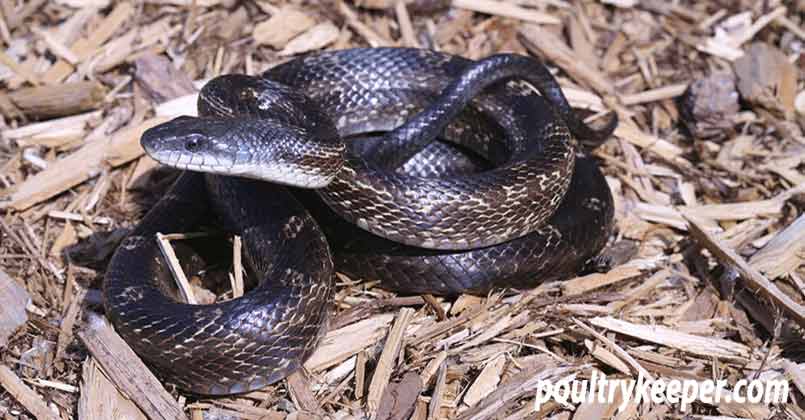
- Kingsnakes are unique because they eat other snakes, including venomous ones! everything reptiles.com says that their venom immunity is what gives them this ability. In addition to snakes, they feed on rodents, birds, and your hens’ eggs, if they can get them. They have distinctive red, black, and yellow stripes and are often mistaken for similarly colored and venomous coral snakes.
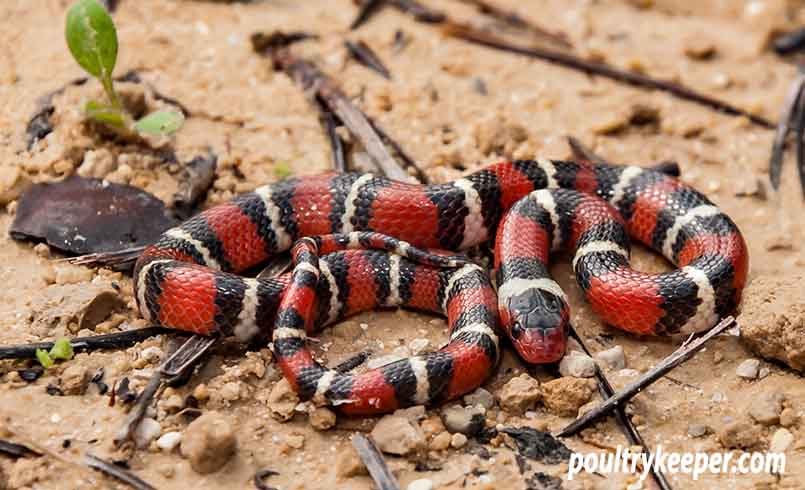
- Milk snakes are a subspecies of kingsnake that are deserving of their own bullet point because of how frequently they are found on farms. In fact, they even earned their name from being common visitors to barns in search of mice and rats. They are also fond of chicken eggs, so be prepared if you spy one lurking around the barn.
- Bullsnakes are native to Western North America and can be found as far north as Canada and as far south as Mexico. They are known as rattlesnake imposters, mimicking the coloring and behavior of their dangerous cousins. However, bull snakes possess no venom and rarely bite humans unless provoked. They have no rattles, but shake their tails and force air through their throats to create a rattling sound. They will go after chicken eggs, though, as well as rodents, birds, and small reptiles.
Snakes in the hen house
A snake in the hen house can be a disaster for your flock. If you have fully grown hens, many snakes won’t be large enough to consume them, as snakes tend not to eat food that’s larger than the width of their bodies. In fact, your chickens may even attack and eat small snakes that make their way in. Guinea fowl are well known for aggression towards snakes and will mob a snake if enough of them surround it.
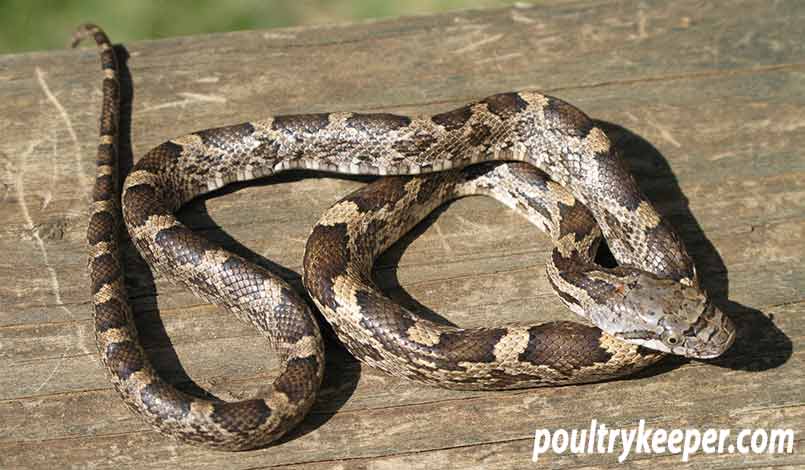
The real problem comes in with eggs and chicks if you have any. Egg robbers can steal dozens of eggs before you even notice and traumatize your birds.
But aside from the damage snakes can cause to your chicken coops, these reptiles are actually great to have around farms. If you can keep them out of your henhouse, they’ll feast on rats, mice, insects, and lizards instead.
Rodents are common pests around farms that can steal chicken feed and spread diseases. Rat snakes and Kingsnakes will also eat other snakes, so while they are around, they also control venomous snakes such as copperheads and rattlesnakes.
But how to keep snakes out of your chicken coop, eating pests away from your precious hens and their eggs? We’ll cover that in the next section.
How to keep snakes out of your chicken coop
Here are some tried and tested ways of how to keep snakes out of your chicken coop so they can’t steal eggs or chicks.
Secure the openings
Do a slow, thorough inspection of your coop to find any gaps or holes in the walls—a snake can squeeze in through even the tiniest opening. Cover the sides and top of the coop with 1/4 inch wire mesh to deter snakes.
Create an "apron"
If your coop has a solid floor, such as concrete, you can skip this step. Otherwise, you’ll need to prevent snakes from burrowing and squeezing underneath the walls. Dig a trench around the coop and bury more of the wire mesh you used to cover the walls at least 8 inches deep.
Remove eggs often
Snakes have keen senses of smell and will be quickly attracted to the scent of a new food source. Remove any eggs frequently (at least once per day), so there’s less of a chance they’ll be eaten up.
Rodent-proof the coop
Rats and mice require food, water and shelter. Poultry houses usually provide all three of these things. Rodents in the coop not only eat your feed and spread disease, but they also attract snakes.
Use rat-proof treadle feeders where possible and store your feed in a rodent-proof metal feed bin. There is more information here on how to get rid of rats.
Keep the yard clear
Snakes like to hang out in tall grasses, brush, and piles of leaves, so you’ll want to keep the area around the coop clear of such hiding places. Keep the grass and bushes well-trimmed to discourage snakes from approaching the henhouse.
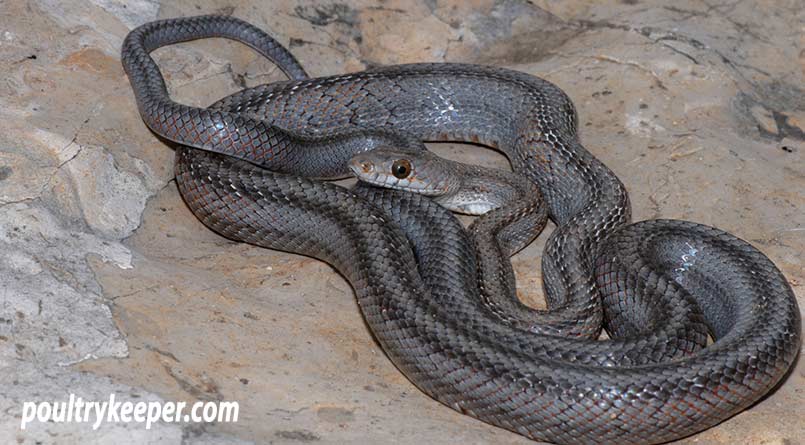
Summary
Snake-proofing your chicken coop is important no matter what region of the US you live in—if these reptilian predators can’t get into the coop, they’ll help you get rid of rodents and other pesky farm pests.
Follow these steps, and your coop will be snake-free!




